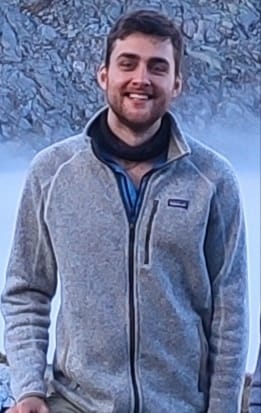
Doctoral student
Project: Comparative phylogeography of nocturnal lemurs (Avahi spp., Lepilemur spp. and Microcebus spp.) in a center of biodiversity in eastern Madagascar
In my project, I will use three lemur radiations in northeastern Madagascar (genera Avahi, Lepilemur and Microcebus) as a model to study the relative importance and interactions of various factors driving the diversification and distribution of species. These genera show biogeographic patterns that cannot be explained by existing models and suggest the importance of rivers, altitude, and species-specific colonization potential as drivers of speciation. In addition, genetic patterns of Microcebus mouse lemur species indicate ongoing diversification. I will use restriction site associated DNA sequencing (RADSeq) together with population genomic and phylogenomic inference to reconstruct the phylogeographic histories of species in the three model genera in the study region. More specifically, I will reveal population structure, infer colonization routes, detect connectivity and hybridization between populations and species separated by rivers and mountain ranges, and infer the spatial and temporal setting of speciation events. These findings will shed light on the general principles underlying Malagasy adaptive radiations and will help to inform conservation priorities.
Professional and scientific career
since 2020
Doctoral student at the Institute of Zoology of the University of Veterinary Medicine Hannover
Supervision: Apl. Prof. Dr. Ute Radespiel, Dr. Ariel Rodríguez, Prof. Dr. Klaus Jung, Dr. Lounès Chikhi
2020
Scientific assistant at the German Institute for Food Technology (2 months)
2017-2020
Study of Biosciences at the University of Münster, Germany (Master of Science)
Master thesis: “Reconstructing the evolutionary history of the honey ant genus Myrmecocystus”
Supervision: Prof. Dr. Jürgen Gadau and Prof. Dr. Marek Borowiec
2014 – 2017
Study of Biosciences at the University of Münster, Germany (Bachelor of Science)
Bachelor Thesis: "Sociogenetic Structure in Lasius fuliginosus"
Supervision: Prof. Dr. Jürgen Gadau
Publications
I. Articles in peer reviewed journals
van Elst, T., Eriksson, T., Gadau, J., Johnson, B., Taylor, J., Rabeling, C. & M. Borowiec (2021) “Comprehensive phylogeny of Myrmecocystus honey ants highlights cryptic diversity and infers evolution during aridification of the American Southwest” Molecular Phylogenetics and Evolution 155. DOI: https://doi.org/10.1016/j.ympev.2020.107036
van Elst, T., & J. Gadau (2018) “Temporal variation in social structure and worker reproduction in the temporary social parasite Lasius fuliginosus (Hymenoptera: Formicidae)” Myrmecological News 27: 75-85. DOI: https://doi.org/10.25849/myrmecol.news_027:075
II. Abstracts of international conferences
2019
“Ultraconserved elements help to resolve evolutionary relationships across several time scales in the honey ant genus Myrmecocystus” (Talk) 112th Annual Meeting of the German Zoological Society, Jena, Germany, and 6th Central European IUSSI Meeting, Vienna, Austria
2018
“Facultative polyandry, polygyny, and worker reproduction in Lasius fuliginosus” (Poster) 18th IUSSI Congress, Guarujá, Brazil
Awards & Grants
2018
Travel Grant provided by the IUSSI Northwest-European section
Student scholarship provided by the ERASMUS+ program of the European Commission
2016
RISE worldwide scholarship provided by the German Academic Exchange Service (DAAD)




